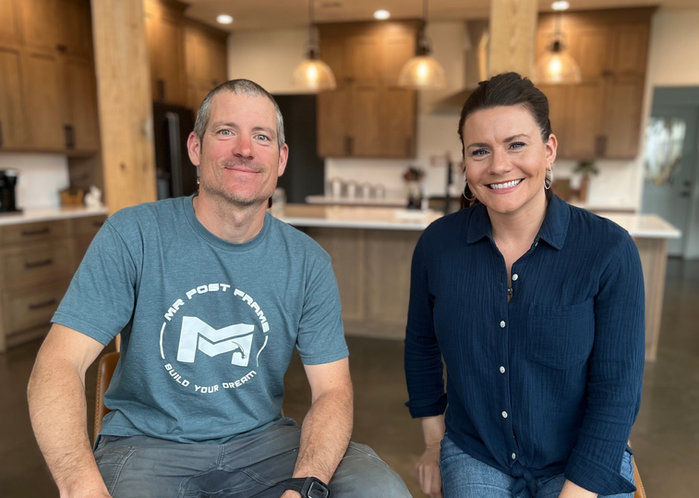Barndominium Metal Siding | MAD County Standard | Part 16
- MR Post Frame
- Jan 5, 2024
- 3 min read
Updated: Jan 11, 2024
Alright, guys, welcome back to Mr. Post Frame. My name is Paul, and today we're going to be putting on some metal siding, trim, and other related items. But before we get started, if you're self-building, you'll reach a point where you need equipment, such as a lift. I do own some, but there are pieces that I don't, and I've been using Big Rents for the last few years. I just wanted to let you guys know it's a really easy way to rent equipment anywhere in the country.

I know some of you are probably in areas where there's not a lot of rental options around. They have a website or you can call, tell them what you want, and usually, you have your equipment within a day or two. They have a network of rental companies across the country, so it's nationwide. They'll find the equipment you want, get it there, and manage all the logistics, making it quick and easy. Keep that in mind when you're self-building and need something to rent or if you're running a business like me and need a piece of equipment you don't have. It's a nice, easy way to get quality equipment to get your job done.
Now, the purpose of the lift I got is for articulating. I have a scissor lift that goes straight up, but when I have tie-in buildings smaller than my main structure or a porch roof, I can't usually reach where I need to with my lift. So, I rent these articulating lifts, which we're going to use today to put on some snow bars, gable metal, and other trims in corners where we can't reach over the porch or garage roof. That's what we're using it for. Let's go ahead and jump into the show.

I begin with the wainscot installation. I first trim the windows and doors and then install all the way around. We initially were waiting on the rest of our steel but eventually it came and we began to sort it. We sorted it into different piles depending on size. The tedious part is separating it. The longest pieces will be on the bottom, and then the shorter pieces. It can be time-consuming, but it's necessary. Doing it by yourself is kind of next to impossible on some of the longer pieces, so I always make sure I have help for this part.

I bring all of the steel piles near where they will be installed. We going to line them up at the bottom and then punch all our screw holes. That way, when we put it up there, it goes nice and quick. For all our post-frame home builds, we always break the end gable up. We'll have a linear break. It adds a lot of curb appeal, and in my opinion, it makes life a lot easier, especially dealing with smaller pieces. In order to do this I use my Dewalt self-level laser.
I use a lot of math for the measuring and cutting portion. I use the pythagorean theorem to figure out the rise and the run necessary. Before I cut each piece I’ll ask whoever is helping me if it’s still correct and they’ll let me know. We then can begin installing all the metal pieces for the front, back, and sides.

We've moved the steel to where we can access it from the lift now. We're working on finishing up the roof because it keeps snowing and freezing, making it challenging.
We're overlapping our sidewall trim here. What I do is a half-inch bend over and then slide it on. My ridge cap will actually come up over this, but it adds a nice finish.
The outside closure seals the space between the steel and the sidewall trim. This trim goes up behind the steel and then out over it. We simply insert the closure strip, which prevents rain, snow, and ice from getting in.
All right, so that's a wrap on today's post about metal sideing. Stay tuned because we have some interior details coming your way as well as finishing off the exterior of this barndominium with Versetta Stone.
Thank you,
MR Post Frame

Patreon Group:
Interested in tackling your build on your own? If you want to explore the possibility of being your GC or self-building, our Patreon membership is for you! It's a community of like-minded people offering support, discounts, Q/A, and more.